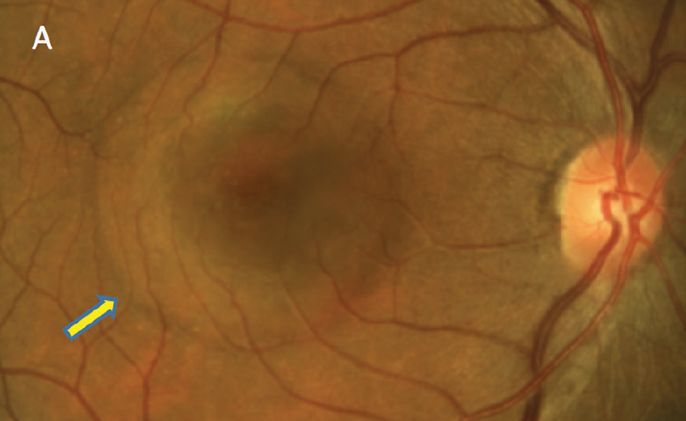 |
| Final visual acuity was worse in eyes with CSC and pachychoroid. Photo: Mohammad Rafieetary, OD. Click image to enlarge. |
Central serous chorioretinopathy (CSC) is considered a precursor or initial pathology in the development of pachychoroid neovasculopathy and polypoidal choroidal vasculopathy. Pachychoroid spectrum disorder is a relatively new concept that describes an array of conditions characterized by a thicker than average choroid. Its catalysts and clinical features are still being described, and a new study performed in India offers more insights.
It is noteworthy that neither every eye with pachychoroid develops CSC nor every eye with CSC has pachychoroid. The eyes that have a thinner choroid develop CSC primarily due to retinal pigment epithelium dysfunction. Researchers believed it was imperative to evaluate CSC in terms of choroidal thickness and to study the presentation of CSC with and without pachychoroid. They found that eyes with CSC that have pachychoroid were more likely to have recurrent episodes and less likely to have spontaneous resolution compared with CSC eyes with thinner choroid.
The retrospective, longitudinal record-based study divided 250 eyes of 250 patients into pachychoroid and non-pachychoroid with 125 eyes in each group based on the subfoveal choroidal thickness of 300µm and the presence of pachyvessels. Mean ages of patients in pachychoroid and non-pachychoroid groups were 45.7 and 47.4, respectively. Mean initial best-corrected visual acuity (BCVA; logMAR) was 0.40 in pachychoroid and 0.39 in non-pachychoroid group. Mean final BCVA was 0.37 in pachychoroid and 0.21 in non-pachychoroid group. The researchers found that 28.8% of eyes in the pachychoroid group and 48% eyes in the non-pachychoroid group had spontaneous resolution of CSC.
“This means that eyes in the pachychoroid group were more likely to require treatment for CSC and pachychoroid may attain the status of a prognostic marker for CSC,” the researchers wrote in their paper.
They also noted that a total of 31.2% eyes in the pachychoroid group and 10.4% in the non-pachychoroid group had recurrent CSC at the end of follow-up. The study showed that fibrin and exudative retinal detachment were more likely to be noted in CSC eyes with pachychoroid; however, this difference was not statistically significant. Serous RPE detachment was significantly more common in the pachychoroid group.
“Eyes without pachychoroid had better final visual outcome compared to eyes with pachychoroid,” the researchers concluded. “A larger case series in a prospective study design would be needed to further substantiate our findings.”
Bhattacharyya S, Saurabh K, Das S, et al. Presentation and outcome of central serous chorioretinopathy with and without pachychoroid. Eye (Lond). June 27, 2023. [Epub ahead of print]. |

